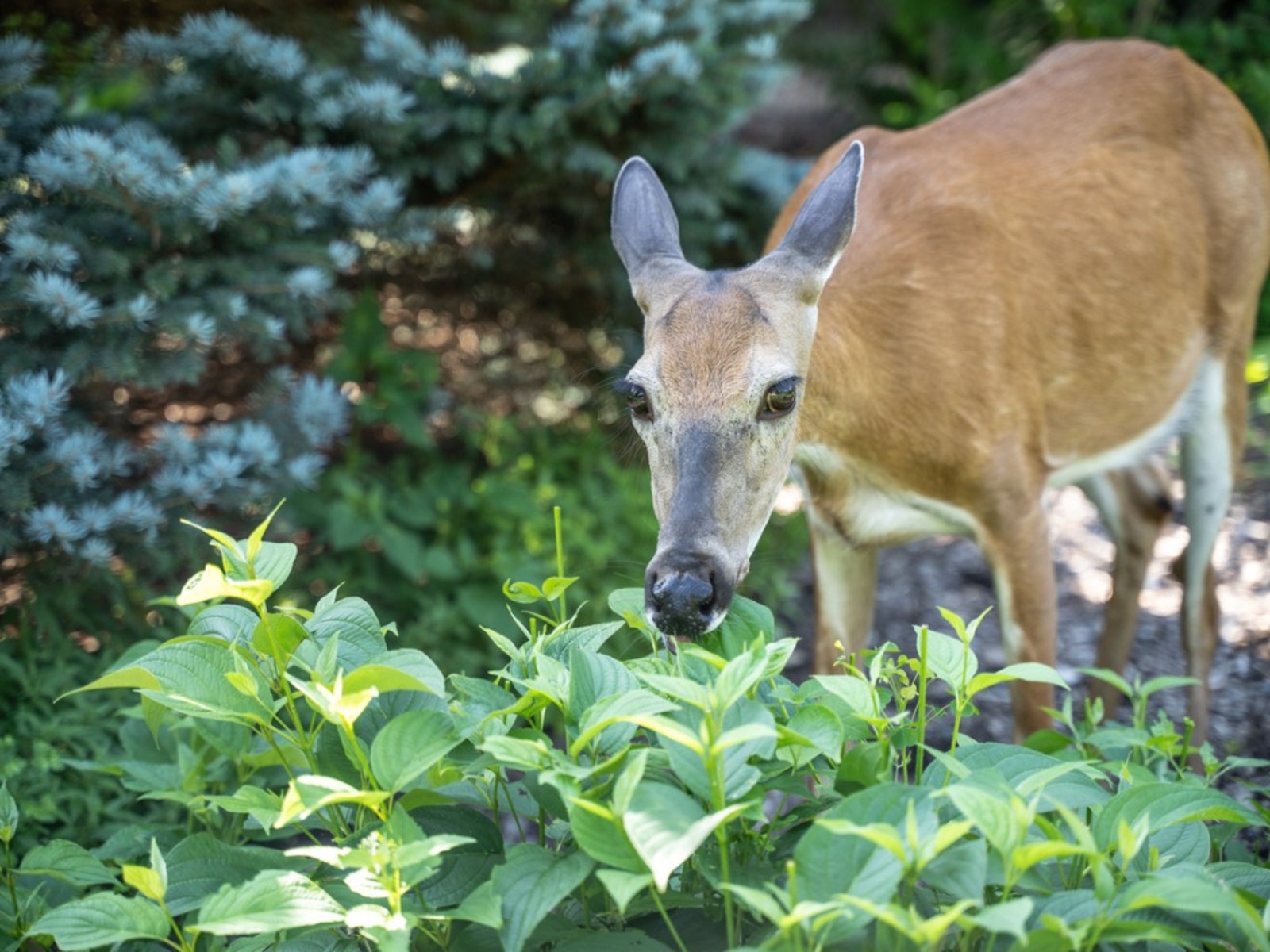How To Keep Deer From Eating Plants - Garden Deer Protection For Plants


Deer can cause extensive damage to your garden as well as other areas of the landscape. Not only do they feast on garden veggies, shrubs, and trees, but deer also cause damage by trampling plants and rubbing tree bark.
Trying to keep deer out of the garden can be frustrating, to say the least, but with a little know-how and ingenuity, your efforts for garden deer protection could be well worth the trouble. Keep reading to learn a little more about how to keep deer out of the garden.
How to Keep Deer Out of Garden
Figuring out how to keep deer out of garden areas may be as simple as installing fencing around your perimeter. Suitable fencing is one of the best choices for stopping deer from entering your yard.
Of course, the type of fence you choose will depend on your individual needs-- including your budget. Although deer do not typically jump over 6-foot (2 m.) fencing, if threatened or chased, deer can easily clear an 8-foot (2 m.) structure. Therefore, regardless of the type, it's still a good idea to erect something at least 6 to 8 feet (2 m.) high. High tensile and woven mesh fencing are both suitable choices for garden deer protection. However, high-tensile fencing is typically more affordable.
Since deer will also crawl under or through openings in a fence, it's important to check it often for damage, fixing any areas in need of repair. The fence should also be placed as close to the ground as possible, filling in any low spots that deer might take advantage of. An alternative to tall fencing is an electric fence, which may be ideal for smaller garden areas.
Some people even favor the “peanut butter” fence to keep deer out of the garden. With this type of electric fencing, peanut butter is placed along the top of the fence in an effort to lure deer. Once the fence is on and the deer come up to nibble the peanut butter, they receive a good shock. After being shocked a time or two, the deer eventually learn to avoid the area.
How to Keep Deer from Eating Plants
Sometimes fencing may not be practical. Therefore, protecting individual plants with garden deer repellents may be more effective.
Sign up for the Gardening Know How newsletter today and receive a free copy of our e-book "How to Grow Delicious Tomatoes".
For instance, one way how to keep deer from eating plants is to use tree protectors made from wire or plastic that can be placed around individual trees, especially young fruit trees and ornamentals. These should be at least 6 feet (2 m.) high for older trees.
Repellents are another option to keep deer out of the garden. Garden deer repellents are designed to deter these animals through unattractive tastes/odors or frightening noises. While some repellents are questionable, many can provide short-term relief. Since deer usually browse from the top down, repellents should be placed at the bud or new growth level. One of the most effective garden deer repellents includes the use of an egg mixture (80 percent water to 20 percent eggs), which is sprayed on the plants and reapplied each month.
Additional Garden Deer Protection
When all else fails, you may want to discourage these animals by removing some of their favorite plants—azaleas, hosta, lily varieties, tulips, maple, and cherry trees.
Planting less preferred plants in their place may offer additional relief. Some deer-resistant plants include:

Nikki Tilley has been gardening for nearly three decades. The former Senior Editor and Archivist of Gardening Know How, Nikki has also authored six gardening books.